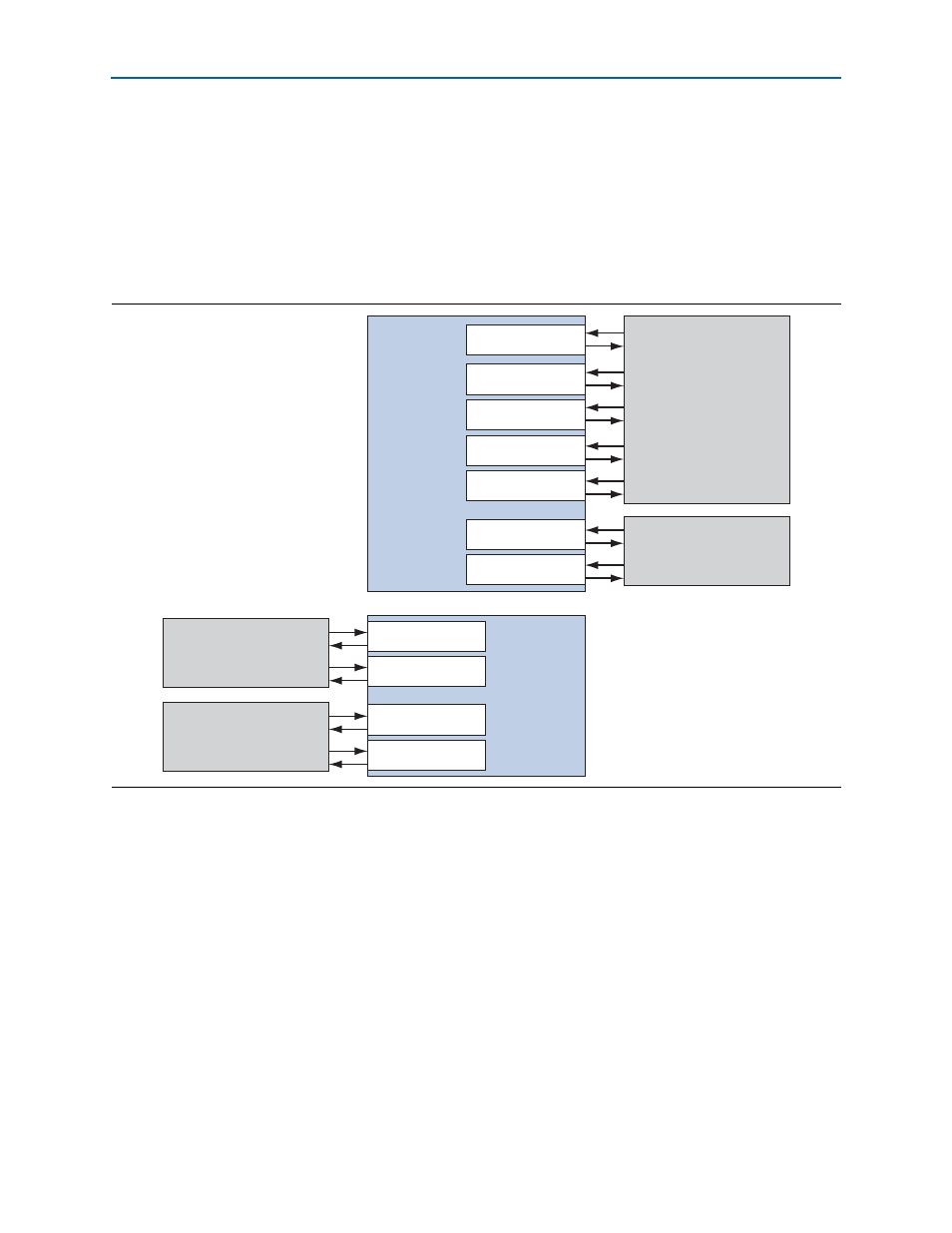Altera RapidIO MegaCore Function User Manual
Page 33

Chapter 2: Getting Started
2–11
Instantiating Multiple RapidIO IP Cores
August 2014
Altera Corporation
RapidIO MegaCore Function
User Guide
illustrates an example design with two Transceiver Reconfiguration
Controllers and four RapidIO IP cores. In the example, Altera Transceiver
Reconfiguration Controller 0 has seven reconfiguration interfaces, and Altera
Transceiver Reconfiguration Controller 1 has four reconfiguration interfaces. Each
sub-block shown in a Transceiver Reconfiguration Controller block represents a single
reconfiguration interface. The example shows only one possible configuration for this
combination of RapidIO IP cores; subject to the constraints described, you may choose
a different configuration.
Refer to
for the values of N and M in
f
Refer to the "Transceiver Reconfiguration Controller
for more information about the Transceiver Reconfiguration
Controller interfaces and how to control dynamic reconfiguration for multiple
transceiver channels. Refer to
for information about the
reconfig_fromgxb
and reconfig_togxb signals that connect a single RapidIO IP core
to multiple Transceiver Reconfiguration Controller interfaces of the same Transceiver
Reconfiguration Controller.
To enable the Quartus II software to place distinct RapidIO IP cores in the same
Arria V, Cyclone V, or Stratix V transceiver block, you must ensure that the
phy_mgmt_clk
input to each RapidIO IP core is driven by the same programming
interface clock.
Figure 2–3. Example Connections Between Two Transceiver Reconfiguration Controllers and Four RapidIO IP Cores
Altera
Transceiver
Reconfiguration
Controller
0
1x RapidIO
IP Core
1x RapidIO
IP Core
Altera
Transceiver
Reconfiguration
Controller
1
reconfig_from_xcvr[N-1:0]
reconfig_to_xcvr[M-1:0]
reconfig_fromgxb[N-1:0]
reconfig_togxb[M-1:0]
reconfig_from_xcvr[N-1:0]
reconfig_to_xcvr[M-1:0]
reconfig_fromgxb[2N-1:N]
reconfig_togxb[2M-1:M]
reconfig_from_xcvr[N-1:0]
reconfig_to_xcvr[M-1:0]
reconfig_fromgxb[N-1:0]
reconfig_togxb[M-1:0]
reconfig_from_xcvr[N-1:0]
reconfig_to_xcvr[M-1:0]
reconfig_from_xcvr[N-1:0]
reconfig_to_xcvr[M-1:0]
reconfig_from_xcvr[N-1:0]
reconfig_to_xcvr[M-1:0]
reconfig_from_xcvr[N-1:0]
reconfig_to_xcvr[M-1:0]
reconfig_from_xcvr[N-1:0]
reconfig_to_xcvr[M-1:0]
reconfig_from_xcvr[N-1:0]
reconfig_to_xcvr[M-1:0]
reconfig_from_xcvr[N-1:0]
reconfig_to_xcvr[M-1:0]
reconfig_from_xcvr[N-1:0]
reconfig_to_xcvr[M-1:0]
reconfig_fromgxb[2N-1:N]
reconfig_togxb[2M-1:M]
1x RapidIO
IP Core
reconfig_fromgxb[N-1:0]
reconfig_togxb[M-1:0]
reconfig_fromgxb[2N-1:N]
reconfig_togxb[2M-1:M]
4x RapidIO
IP Core
reconfig_fromgxb[5N-1:4N]
reconfig_togxb[5M-1:4M]
reconfig_fromgxb[3N-1:2N]
reconfig_togxb[3M-1:2M]
reconfig_fromgxb[4N-1:3N]
reconfig_togxb[4M-1:3M]
reconfig_fromgxb[N-1:0]
reconfig_togxb[M-1:0]
reconfig_fromgxb[2N-1:N]
reconfig_togxb[2M-1:M]
